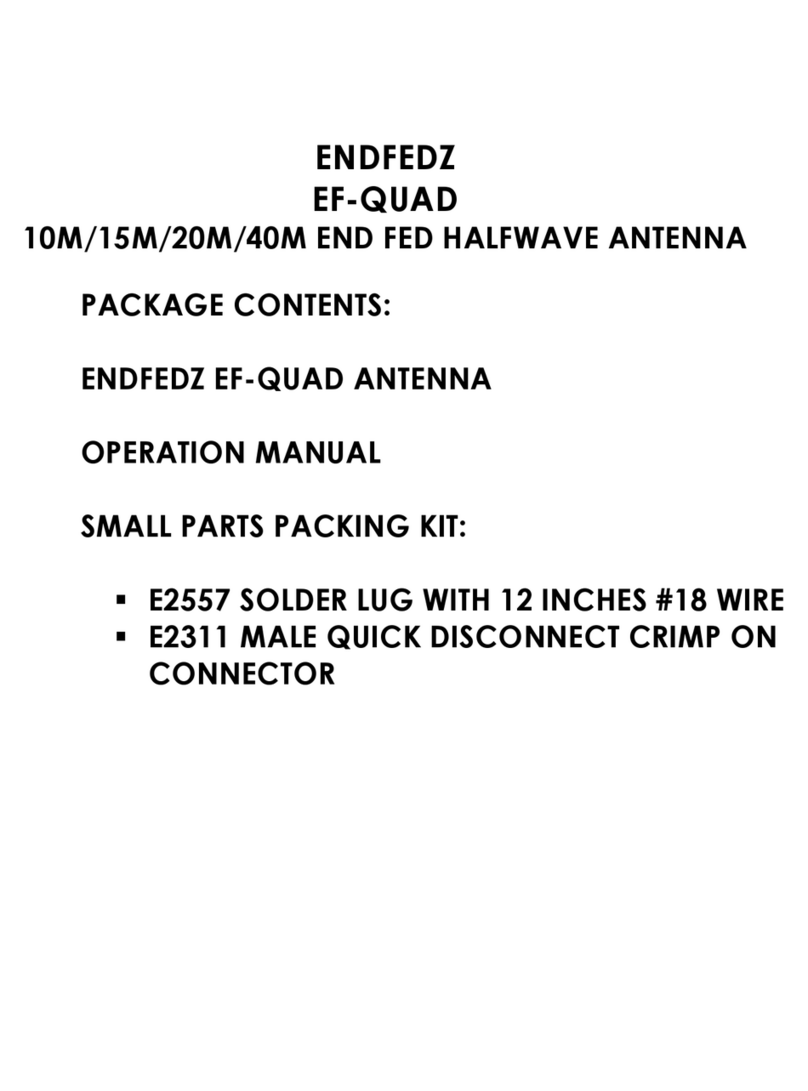Page 4of 4
Installation Checklist:
1. In Figure 2A, secure the support rope or cord so that it is ready to lift the EFHW transformer into
position. It is not recommended to support the transformer with the antenna wire. Attach the
support rope or cord to the eyebolt on the top of the matchbox.
2. Attach the support rope or cord to the EFHW antenna wire end insulator.
3. Attach the coax feed line to the transformer feed line connector, then waterproof appropriately.
4. Optional: Attach either a counterpoise wire or a wire connecting to a ground rod to the
transformer ground attachment screw. This is the wing nut on a 10-24 thread bolt next to the
SO-239 connector. (Use either a ground rod or counterpoise, not both). For permanent
installations, use anti-oxidation compound or connection protection grease on the ring terminal.
5. Position the antenna:
a. In Figure 2A, lift the transformer unit into position and secure the antenna wire.
b. In Figure 2B, stretch out the antenna wire and secure. Do not kink the antenna wire.
Installation Notes
1. Support: The antenna requires a single support —such as a tree, pole, or portable mast —that
can both support the transformer and any tension on the antenna. Light-duty cord or twine (not
supplied) is sufficient to support the antenna.
2. Waterproofing: For the wire attachment screws, coat the ring terminal with anti-oxidation
compound before installing. For the feed line connector, use a good-quality electrical tape such
as Scotch 33. Assuming the feed line will hang below the feed point enclosure, start wrapping
tape on the feed line PL-259 and work toward the enclosure. Wrap the entire connector all the
way to the enclosure and finish with two wraps that cover the exposed SO-239 threads.
Specifications
Polarity: Depends on mounting configuration
Design Z: 50 ohms
VSWR bandwidth 7 MHz: 300 kHz <2:1
VSWR bandwidth 14 MHz: 350 kHz <2:1
VSWR bandwidth 21 MHz: 450 kHz <2:1
VSWR bandwidth 28 MHz: 700 kHz <2:1
Power handling: 1 KW ICAS
Weight: 1 lb, 1 oz (0.48 kg)
Radiator wire length: 66’ 1” (20.14 m), including coil
Radiator wire type: #18 AWG Polystealth
Hardware: All stainless steel
Connector: SO-239
Par EndFedz
Vibroplex LLC
1001 N Broadway St
Knoxville TN 37917 USA
(865) 309-5073
vibroplex@vibroplex.com
www.vibroplex.com






















